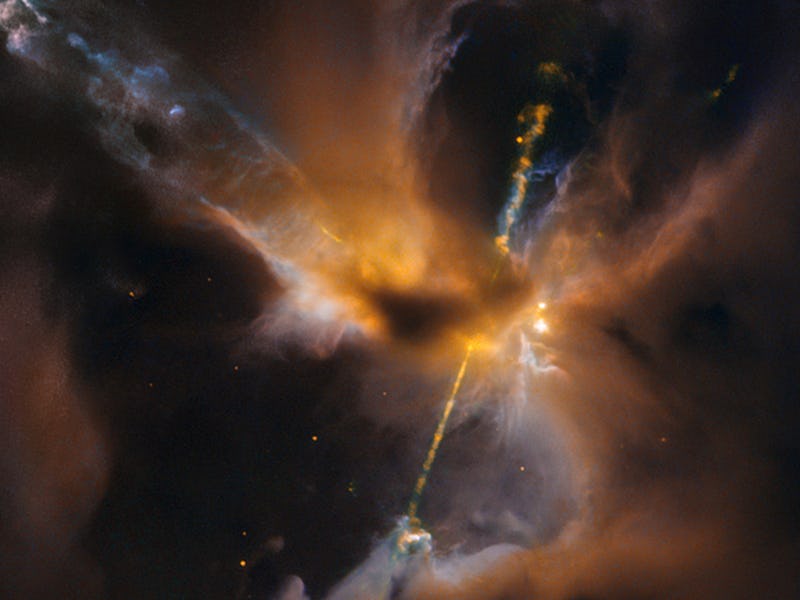NASA’s Hubble Space Telescope has orbited Earth for more than 30 years — and it is showing its age. This weekend, it hit a stumbling block it’s yet to emerge from.
On Sunday, the NASA Hubble Twitter account posted news the craft had entered safe mode at around 4 a.m. Eastern. Here on Earth, mission scientists scrambled to put our eye in the sky back online.
When asked for comment, a NASA spokesperson told Inverse:
“The Hubble Space Telescope is in good condition but remains in safe mode as a precaution while the team works to fully understand the error encountered on Sunday and the associated safe mode response. The team is working to return Hubble back to science operations as soon as possible.”
A screenshot of the NASA tweet.
There are currently no details available on when the mission might be fully operational again, but NASA’s comment is encouraging for stargazing fans of the telescope.
What is safe mode for the Hubble Telescope?
Safe mode on Hubble is pretty much the same as what happens to your home computer when it goes into sleep mode unexpectedly: a software problem causes the machine to default to basic operations only. This means that while Hubble is still in touch with NASA, it isn’t able to operate as normal. Thankfully for NASA ground crews, there appear to be no hardware problems at this time.
That’s good news: Hubble is some 330 miles above the Earth, so maintenance operations aren’t exactly simple, easy fixes — but it has been done before.
The Hubble Space Telescope has observed the heavens for nearly 31 years — but recent software stumbles have left it unable to gaze into the heavens.
Hubble was launched in 1990 aboard the space shuttle Discovery. The telescope orbits at a distance of 333-336 miles above Earth, depending on its point in its orbit.
This orbit was selected specifically so the telescope could be serviced by astronauts. And it has been: Since launch, it has received a series of upgrades — first, in 1993, to correct a defective mirror that hobbled its ability to see properly, and then an additional four times to perform other essential hardware upgrades.
Can the Hubble Telescope be repaired?
The last shuttle mission was in 2011. Since then, NASA not established another way to send astronauts up to physically service the aging telescope. This means any problems now may be the death of the iconic instrument: Soon, the telescope could hit a point in its lifetime when it’s no longer operational.
It does have a successor: The James Webb Space Telescope has been an expected follow-on mission for years now. This new observatory has faced a series of delays, and it remains on the ground for now. It is currently slated to launch in October 2021.
The giant sunshield for the James Webb Space Telescope. Beset with delays, the telescope is supposed to replace Hubble.
Unlike Hubble, the James Webb Space Telescope will not be able to be serviced by astronauts, as it will be placed in an orbit out of reach for any current NASA human flight vehicle.
